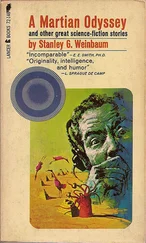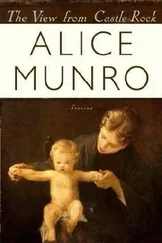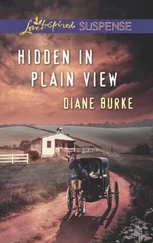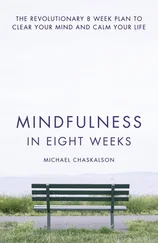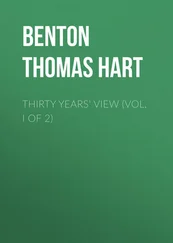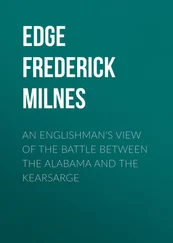“Oh, I’m sorry you’ve had to wait. Hold just a moment.”
I had the doc on the line in under sixty and we were cleared to interview in less than that. Ainsley shook his head slowly, part admiration, part disgust.
“Dues you must pay,” I intoned in my best Yoda imitation. “Eat much shit, then you, too, can use the force over secretaries. Let’s go.”
3:09:13 p.m.
We followed a major strip-mall route all the way to the western edge of the universe where the county hospital barely held the line on civilization. From what I’d heard, this hospital served a clientele that included everything from the average yuppie heart attack to the pavement drunk with a tire-track headache.
My sister worked there for years before she died. There.
I’m not fond of hospitals.
“Your aspirin bottle is empty, College.”
“It’s not mine. Somebody left it in there.”
“Right. Add this to your critical equipment list. Pain reliever-we don’t leave home without it. We should be stocking ibuprofen, extra-strength Tylenol and Tums, oh and breath mints-in the glove compartment. Got it?”
“Why?”
That got a laugh. I hope that’s why he asked.
It took us as long to park the van and wind our way through the Escher-like interior of the hospital as it had to drive to the edge of the county. Of course, I had no reason to complain. Ainsley did all the hauling. Our doctor’s office was tucked in a dead-end hallway. There were plastic chairs along the wall, a small side table and eight copies of the same 1998 issue of Prevention magazine, all labeled Do Not Remove.
The inner sanctum receptionist greeted us and buzzed the doctor.
“Ms. O’Hara? I’m Dr. Graham. Please come this way. We can talk in my office.”
Dr. Graham was in her late forties. She had a cap of silvery brown hair, thick wire-rim eyeglasses, and wore a shapeless sack dress, but she had a voice like an angel-resonant, modulated. Perfect V.O. material. She could sell anything in a voice-over.
She shook my hand, then Ainsley’s. “Please understand, Ms. O’Hara, most of my practice is family therapy. My qualifications as an ‘expert,’” she smiled as she drew little finger quotes in the air, “regarding Amish psychology are tenuous at best. If you want a referral, I can direct you to people in Pennsylvania and New York who are much more qualified.”
“Whatever you can tell us will be a great help, Doctor,” I said. “The hospital PR people told us it was your specialty.”
“I’ve done some research that involved Amish subjects. I organized several studies on the effects of family size on individuals and society. The Amish make an excellent reference group, very homogeneous.”
“Really?” I said, meaning, keep talking.
“Yes. The average Amish family has seven children. Almost a quarter have ten or more.”
“Ten kids?”
“That’s right. Quite a difference, isn’t it? The birthrate in the U.S. still hovers around two children per family.”
“One seems like more than enough to me,” I tossed out, but didn’t get the laugh. “Tell me more about your study.”
She fussed with her desk drawers, opening and closing, peering inside as she spoke.
“‘Effects of Large Families on Self-Actualization and Community.’”
“Oh.” It came out as one of those stupid-sounding oh’s. Doctors make me nervous. I never get my best interviews out of doctors. I rallied with another, “Really?”
She seemed prepared for that kind of response. “I have it right here, if you’d like to read it?” From out of the desk came a stack of paper four inches thick and bound with a paper cover. She tossed it onto the desktop with a whump that rang of challenge.
“Great. Love to.”
“Take it with you. I have other copies.”
“Terrific.” I passed the brick to Ainsley. He slipped it in my camera bag.
I looked around, concentrating on how we would shoot the interview. Her office was small and not exactly the visual background I wanted. There was the requisite book shelf or three, chairs and a small couch. No diplomas or plaques boasting her credentials on the walls; only one large print of the dunes and Lake Michigan.
She must have noticed me frowning. “I do most of my work over at the university. I’m only in this office twice a week to see clients.”
“Sounds like we were lucky to catch you. Thanks again for agreeing to the interview.”
She tipped her head and the curvature of her eyeglass lens distorted her eye. She looked a bit like a cartoon character peering through a magnifying glass. “What is it you’d like to discuss?”
“As I said, we have a local death possibly involving autoerotic asphyxiation. We’d like you to explain the condition. Any insight you might be able to offer would help.”
“All right.”
I signaled to Ainsley to start setting up and he grinned, happy to be useful. He popped open the titanium suitcases that held the gear and started to rig for an interior interview. Once I was certain he was on the right track, I took out my notebook and flipped to my questions.
“Oh, wait. I’m sorry.” Dr. Graham looked apologetic. “You seem to have misunderstood. I can’t speak on camera on that subject, Ms. O’Hara. Definitely not.”
“Excuse me?”
“I’m happy to answer your questions, but not on record.” She made an effort at earnest eye contact. “In fact, I plan to encourage you to reconsider or at the very least, address the topic with extreme discretion.”
“This is network television, Dr. Graham. Not YouTube. We can be discreet.”
Her earnest look sharpened into incredulity. “Perhaps our ideas of discretion differ. The fact is, it could be extremely dangerous to flash this syndrome across the media.”
“Why?” Ainsley chipped in. He hunkered down into one of her upholstered chairs, all ears.
“For one thing, we don’t know enough about how the practice initiates. The available data indicates death is most prevalent among young men-teenagers and young adults-a population likely to be sexually active, as well as developmentally prone to risk-taking behaviors. If they hear about something like this, they may try it simply because it’s new and dangerous.”
“Increasing awareness should also help doctors learn more about who’s doing it and why,” I countered.
Ainsley frowned. I couldn’t tell if he was unimpressed with my logic or miffed over Herr Doctor’s dim view of his peer group. “I don’t get it. I mean, what’s so sexy about choking to death?”
Dr. Graham masked her face in clinical calm. “There are two physical mechanisms at work. The transient cerebral hypoxia combined with autoerotic manipulation create a very distinctive physiological sensation.”
Ainsley created a distinctive facial expression.
I whispered, “I think she said, lack of air to the brain while whacking off feels weird.”
“No doubt,” he said.
“Of course, human sexuality is never purely physiological,” the doctor continued. “This syndrome is a paraphilia-”
“A what?” Ainsley was barely keeping up.
“-a socially prohibited sexual practice,” she paused to define, “of the sacrificial type. The sense of physical helplessness and self-endangerment enhances the sexual gratification.”
“Yee-ech,” he replied. Hard to argue with that.
The doctor tried. “Quite ubiquitous, actually.”
I gave College a subtle backhand to the biceps. The more he squirmed with repulsion, the more obscure the good doctor’s vocabulary seemed to get. If he kept up with the Mr. Yuck routine, she’d be speaking Latin in a minute.
“The practice has been noted across cultures and throughout history. There’s some evidence it was practiced by the ancient Mayan culture a thousand years ago. And of course, literary references occur in de Sade-”
Читать дальше


